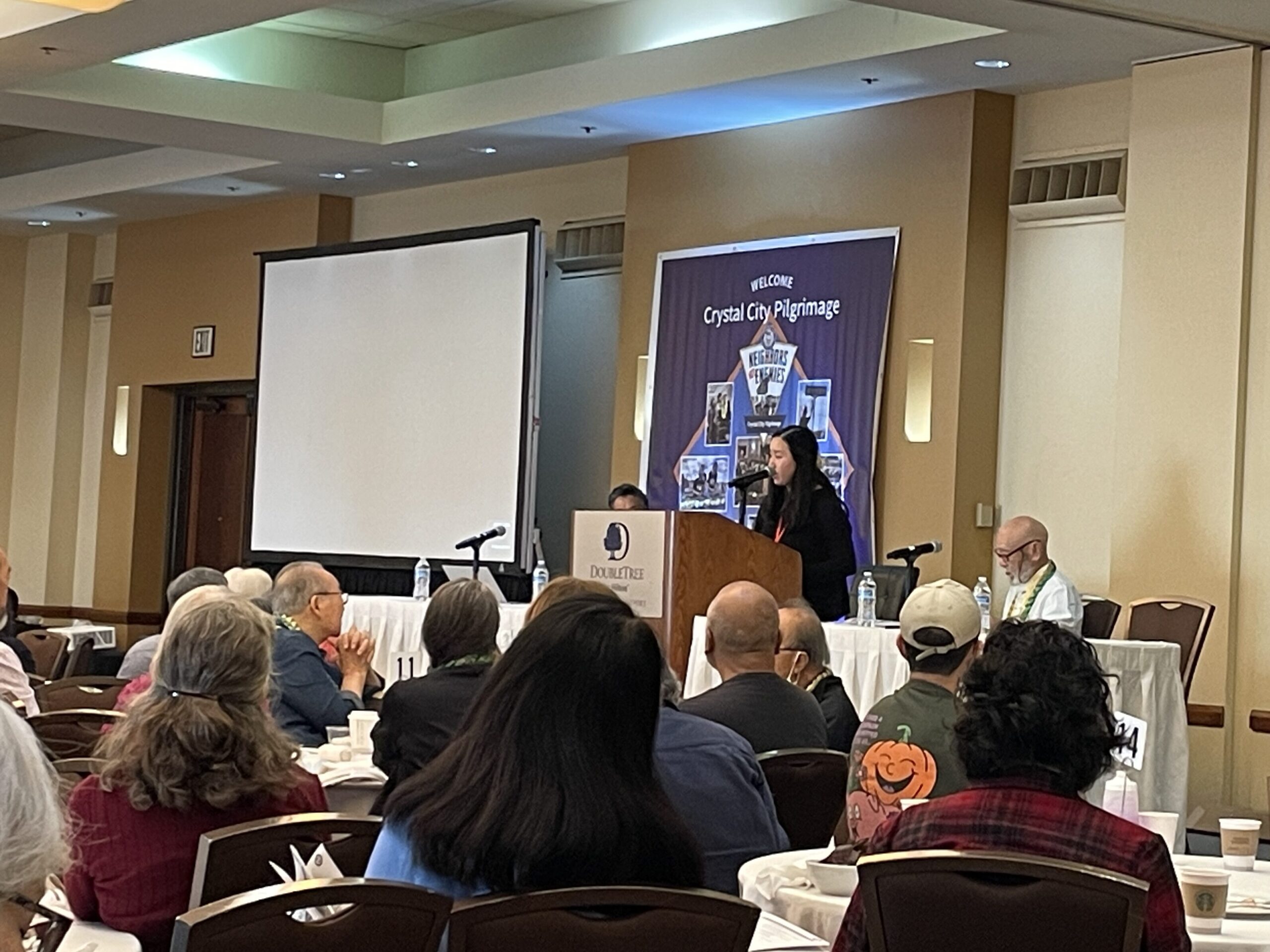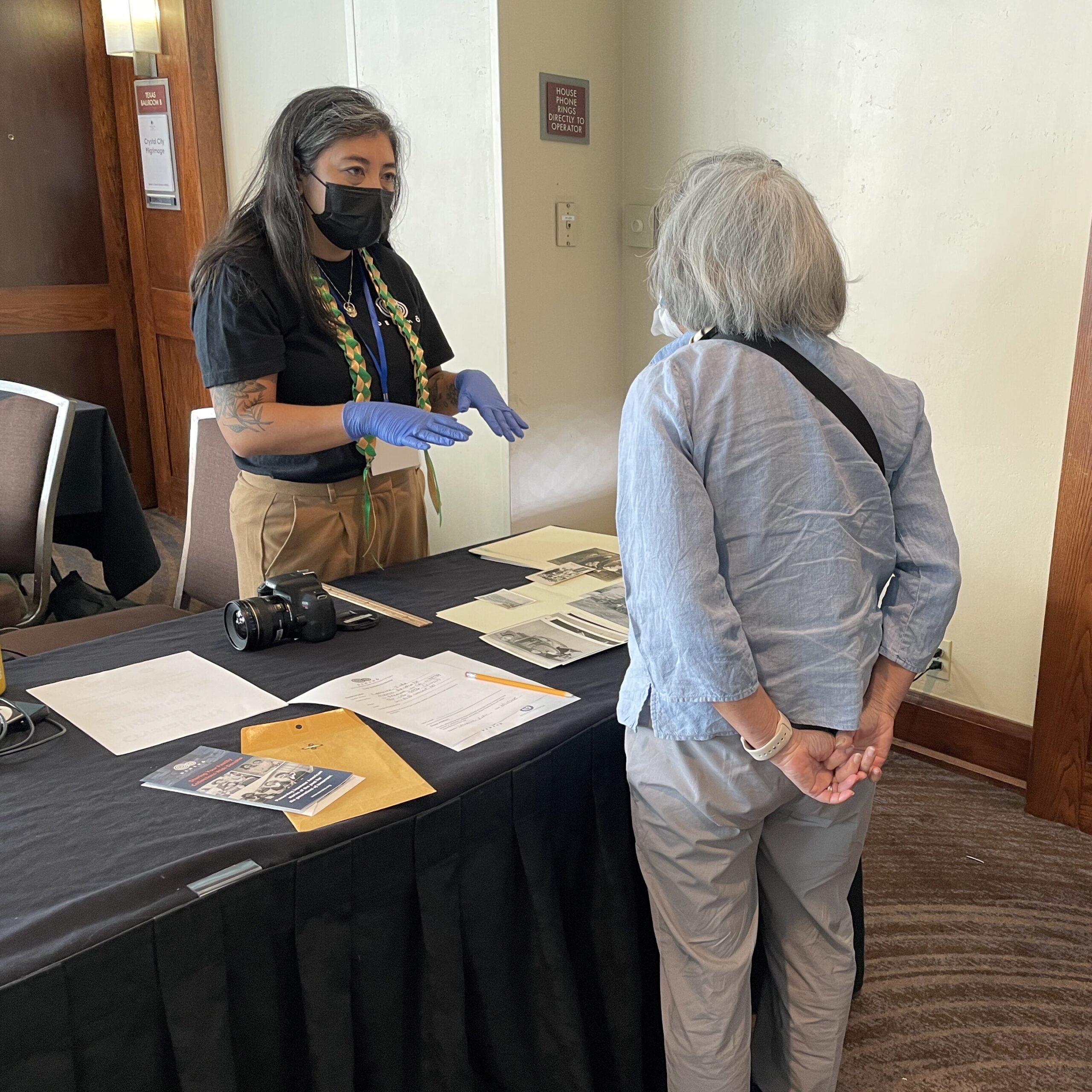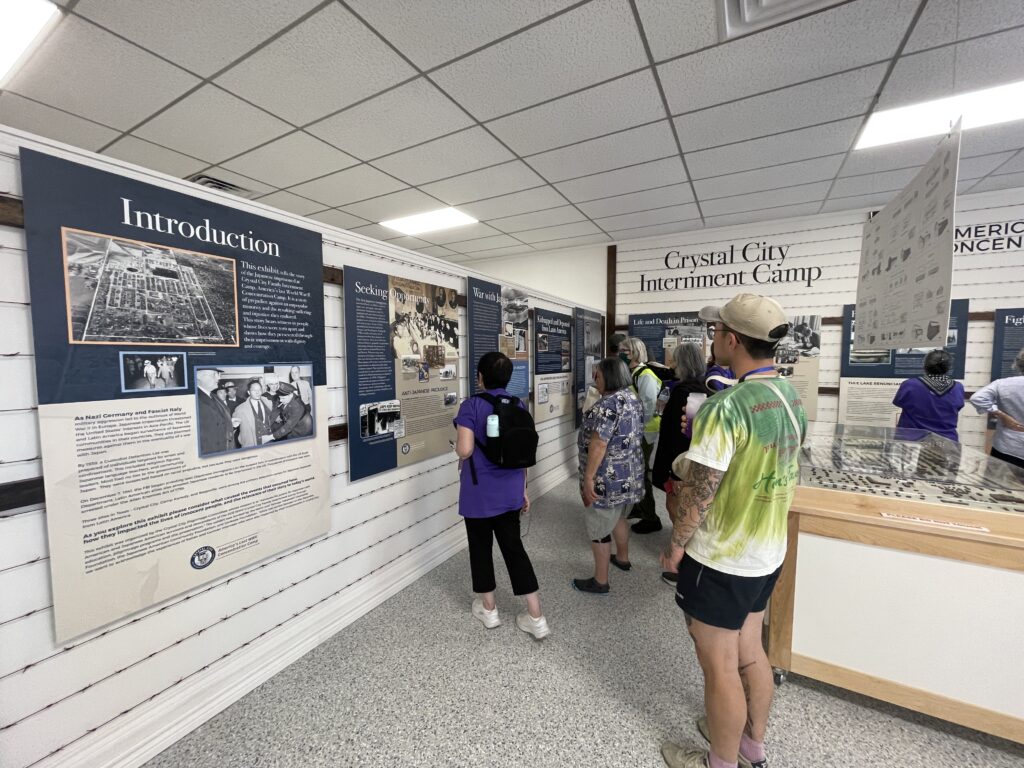November 18, 2025
Last month, Densho’s Courtney Wai, Caitlin Oiye Coon, and Executive Director Naomi Ostwald Kawamura joined survivors, descendants, and community members at the 2025 Crystal City Pilgrimage in San Antonio, Texas. The gathering honored those imprisoned at Crystal City, a Department of Justice (DOJ) and Immigration and Naturalization Service (INS) facility, including Japanese Latin Americans who were forcibly taken from their homes and who, to this day, have not received redress.
Traveling through Uvalde, Texas on our way south—a region shaped by migration and memory—we were reminded of how the histories of incarceration and immigration intertwine. Under the theme “Neighbors Not Enemies,” speakers at the 2025 Crystal City Pilgrimage reflected on the enduring power of xenophobia disguised as “national security,” tracing its roots from the Alien Enemies Act to the present. Pilgrimage Committee member Karissa Tom grounded the weekend with a powerful reminder: “We know what is legal is not always just,” connecting the experiences of Japanese Americans to broader struggles for justice today, including solidarity with Palestine.

The first day of the pilgrimage began in San Antonio, where Bexar County Judge Peter Sakai—whose family was incarcerated in Poston—opened the program with remarks affirming his commitment to justice for Japanese Peruvians, whose stories often remain overlooked.

San Antonio Mayor Gina Ortiz Jones reflected on the lessons of incarceration, cautioning against the use of “national security” to excuse violations of civil liberties, a warning that deeply resonates in the current national climate.

Pilgrimage co-chairs Hiroshi Shimizu, Brian Shibayama, and Gabi Nakashima—representing three generations of the incarceration experience—opened the program with remarks reflecting on family and legacy. Shimizu, a former incarceree who was a child at Crystal City, was joined by Shibayama, son of Art Shibayama, and Nakashima, granddaughter of a former incarceree.

Archives Director Caitlin Oiye Coon works with a pilgrim to scan their family’s photographs as part of Densho’s Community Scanning Program—the first held outside of Washington. The program invites community members to preserve family collections and ensure their stories become part of the historical record.

On Day 2 of the pilgrimage, participants visited the former site of the swimming pool at the Crystal City Internment Camp, which also has a marker honoring two Japanese Peruvian girls, Sachiko Tanabe and Aiko Oyakawa, who drowned in 1944. A rusted tank, painted for the 2002 Crystal City Pilgrimage, still stands with the words “And justice for all” and “United we stand,” reminders of ongoing efforts to honor this history.

At the morning ceremony in Crystal City, pilgrims honored those once imprisoned, and remembered those who passed during their internment. Framed by the pilgrimage’s theme “Neighbors Not Enemies,” the gathering reflected on parallels between WWII incarceration and today’s anti-immigrant climate. Monarch butterflies—symbols of migration and hope—appeared during the ceremony.

Pilgrims view the Crystal City Internment Camp exhibit at the My Story Museum—the first permanent history museum in Crystal City, Texas. The museum features exhibits on the 1969 student walkouts and the Chicano Movement, local veterans, and on the camp. During the pilgrimage, the Crystal City Pilgrimage Committee unveiled an expansion of the camp exhibit, America’s Last WWII Concentration Camp, deepening public understanding of this history and its lasting impact.

In addition to viewing local historical markers, pilgrims heard from local activists who spoke about the hyper-militarization of the border and the ongoing struggle for human rights—drawing connections between present-day injustices and the history of incarceration at Crystal City.

On the final day of the pilgrimage, Natalie A. Sanchez-Lopez of the Latino Texas Policy Center reflected on the psychological connections between the U.S.–Mexico border and the Crystal City high school, noting how beliefs like “If there’s a wall, it’ll keep me safe” echo and amplify racism and xenophobia. She emphasized the ongoing need for solidarity and collective responsibility.
The pilgrimage was also, ultimately, a time of learning for us at Densho. We were able to try out our Community Scanning Program outside of Washington for the first time, meeting families who brought forward photographs, letters, and documents to add to the Densho Digital Repository. We were also reminded that our work is rooted in relationships across generations and borders, and within ongoing struggles for justice.
—
By Densho Education & Public Programs Manager Courtney Wai and Executive Director Naomi Ostwald Kawamura.
